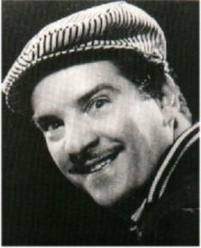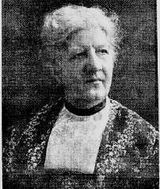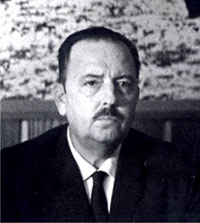
Havana ephemeris. September 18
1914. Roberto Faz is born in the neighborhood of Regla, Havana.

At the age of thirteen he began in the artistic world as part of a children's septet. Later he joined other groups, although his true consecration was achieved when he was called to join the Conjunto Casino and became the main vocalist of this group. In 1956 he officially created his ensemble. His debut took place on February 4 of that year at a dance in the halls of the Liceo de Regla. The first non-commercial recording for the radio was made a few days after the group was created and it corresponded to the bolero “Deuda”, by composer Luis Marquetti. The first long-playing record recorded by Faz's group was made in 1957. He became a great sonero with a powerful voice and a great singularity when interpreting this genre of Cuban popular music. About 400 recordings are recorded in his voice. In his performances he always projected optimism and playfulness. His improvisations were ingenious in the sones montunos and the guarachas.
He passed away in Havana on April 26, 1966.
1921. Odilio Urfé is born in the town of Madruga, then province of Havana.

In his professional work he became an outstanding musical researcher and also a great musician. Since he was a child he was seen playing as a percussionist in the Madruga musical band. He then graduated in the specialties of violin, flute and later in piano. He was part of several groups and was also the creator of the Popular Concert Orchestra. He also founded in 1949 the Institute of Folkloric Research, an institution that developed relevant work for several decades. In October 1959 he organized and directed the Cuban Folk Festival and in 1962 the first Cuban popular music festival. He did a very important job in terms of saving for posterity the music of Gumersindo (Sindo) Garay, the works of the Grenet brothers, and of Ernesto Lecuona and other outstanding composers.
He passed away in Havana on June 6, 1988.
1937. Domitila García de Coronado dies in Havana.

Through her existence, in addition to exercising the profession of a journalist, she was an outstanding school teacher. Since she was little, she began to show a great inclination for literature, which led her to found the magazine El Céfiro in 1866.
At the age of 21, she created the first revolutionary document published in 1868 in her father's printing press.
She was the first woman to practice journalism in Cuba.
She was born in the city of Camagüey, on May 7, 1847.
1960. . Commander in Chief Fidel Castro leaves Havana for New York at the head of the Cuban delegation that would participate in the XV period of sessions of the General Assembly of the United Nations Organization.

At the UN, Fidel delivers a transcendental speech on the 26th of that month.
1979. Dr. Daniel Alonso Menéndez dies in Havana.
He was a notable Cuban pediatrician and health specialist, founding director of the "William Soler" Children's Hospital.

At the triumph of the Revolution he gave himself entirely to the revolutionary cause. He served as Treasurer of the National Medical College, National Director of Hospitals and Polyclinics, Vice Minister of Medical Teaching, Director of the Research Institute and the National Information Center for Medical Sciences and Vice President of the Scientific Council of the Ministry of Public Health, MINSAP.
He belonged to numerous national and foreign scientific societies, but the one he most appreciated was having been considered a Full Member of the Cuban Society of Pediatrics.
His birth took place in the Cuban capital on October 20, 1917.